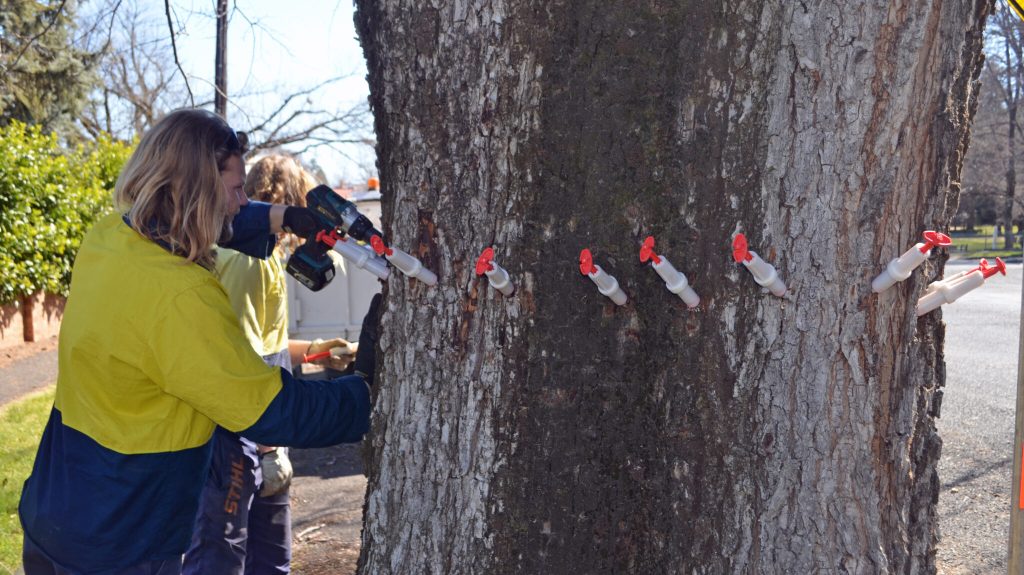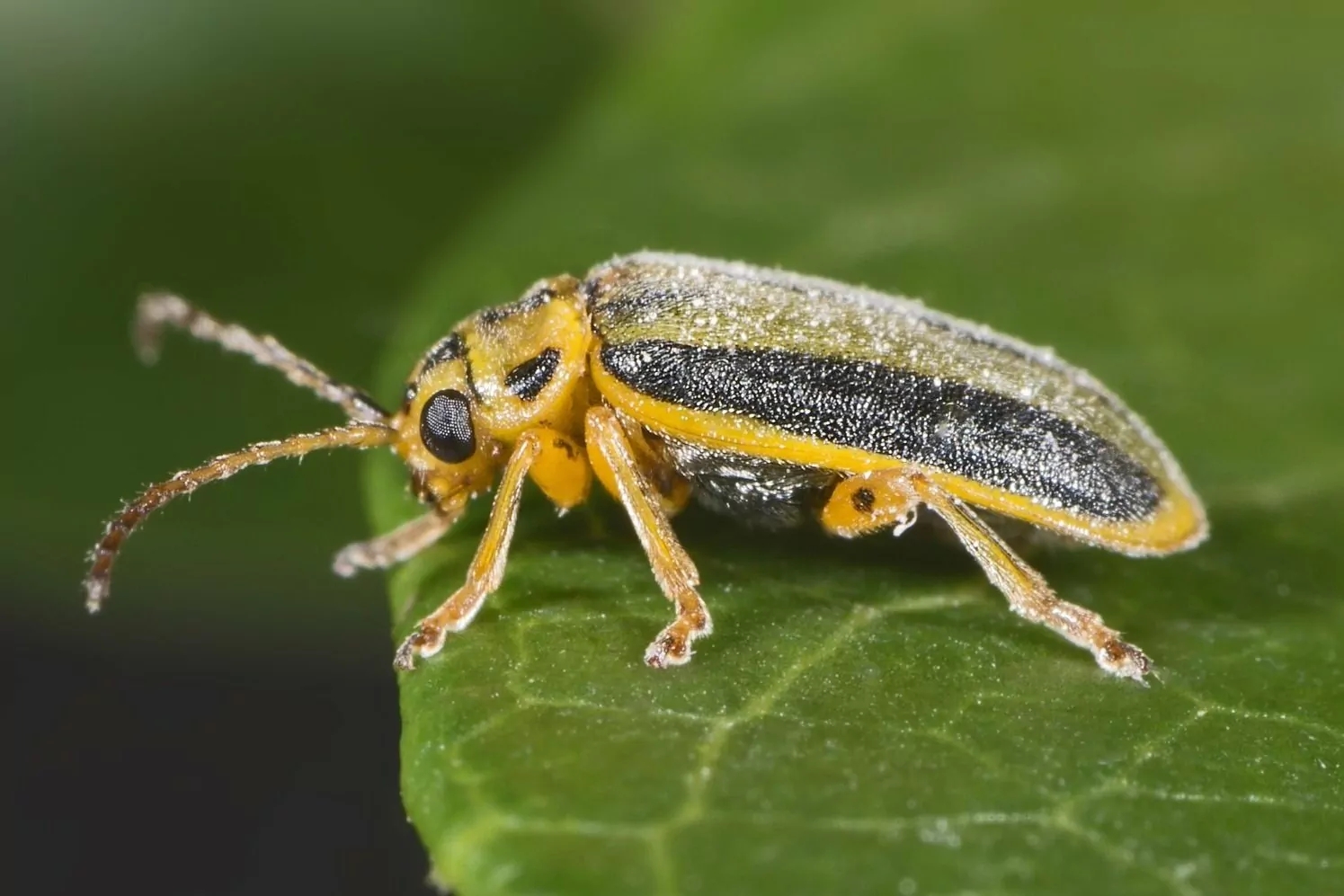Elm trees are deciduous trees, originating from Asia. It has appeared about forty million years ago, but nowadays, there are more than 30 species of elm trees in the world. These trees have oval-shaped leaves with pointy ends and saw-toothed edges. The bark of these leaves is rough with deep grooves and their veins are usually visible to the naked eye. These trees are known for their rapid growth, and adaptation to different soils and climates. They are resistant to wind change and the elements, and also happen to be great at protecting the surrounding. It’s said that they can be submerged in floodwater for days without being damaged. They can even naturally filter sediment while tempering the impacts of flood events. Unfortunately, these trees can be invaded by different types of beetles where elm leaf beetle is one of the most dangerous types.
What Is Elm Leaf Beetle?
The Elm leaf beetle is a pest that feeds on elm leaves. The worst thing of all is that both larvae and adult beetle feed heavily on elm leaves, and even old and mature trees can be completely defoliated which over time can weaken the tree. Unfortunately, these pests can enter homes as well, so getting rid of them is the best you can do.
Life Cycle and Symptoms of Elm Seed Bug
This bug can overwinter as an adult in and around wood piles, structures and landscapes. When spring comes, adults will move into the landscape and egg-laying will begin when elm trees begin to flower. Egg laying is done on the elm flower cups, and laying can continue through June which means that a large number of eggs can be present on the tree. Once the eggs hatch, the immature nymphs will start feeding on elm seeds and they’ll go through 5 nymphal stages before they become winged adults.

Both adults and nymphs feed through their piercing and sucking mouth parts, causing little damage to the overall tree’s health. After the elm seeds mature and fall off the trees, the bugs become more active and can be mainly found on tree trunks and the ground. Once the temperatures get high, adult bugs will start looking for shade to escape the heat and can enter buildings.
The damage to leaves caused by this bug exposure starts between October and February and the most common signs are shot holes in the leaves caused by adult beetles. Leaves skeletonisation is also common which is caused by larvae. The next common symptom is complete defoliation which means that the leaves will fall off out of season and that’s somewhere between August and November. The last sign of a beetle invasion is leaf discolouration which usually happens around December to February.
Treatment
Early treatment is crucial for saving trees and getting rid of these pests. The ideal way to improve the health of your tree is to seek professional elm leaf beetle treatment. The most effective early treatment may include trunk injection with Imidacloprid (insecticide) directly into the tree’s trunk. Through it, the tree will transport the chemicals to the leaves and beetles will be dead in no time. It only takes a small amount of it to be ingested by beetles in order to kill them, and you can be sure that the treatment is successful once you see dead or dying beetles on paved areas. The best thing of all is that this insecticide is safe to use around children and pets.

If there’s a beetle invasion on young trees, professional arborists might decide to use canopy spraying Foliar sprays. They can be applied twice a year and only on young trees since this spray isn’t effective on older trees.
Dealing with larvae is possible and that can be done with non-chemical control banding. This is great for trapping larvae that might migrate on the trunk between December and February. Usually, adhesive tape is wrapped around the trunk in a strip of 20cm width with its sticky side facing out. This may help in breaking the elm leaf beetle lifecycle. Keep in mind that this taping elm leaf beetle treatment should be repeated several times a year if dealing with lots of beetles.
Depending on the situation, the chosen professionals might also decide to treat elm trees by injecting stems before the beetles have laid their eggs or just before the eggs hatch. This treatment can be throughout the year and is considered the most effective.
How to Prevent Elm Seed Bugs from Invading?
Since these trees are quite large, it would be best if you hire tree professionals to care for them. In order to prevent these pests, it would be better to keep elm trees free of dead limbs and suckers. With their special tools and equipment, tree service professionals will be able to get rid of every dead limb which will result in having a healthy thriving tree.
Elm trees should also be regularly watered especially during dry periods, and fertilised in late winter with a slow-release fertiliser. Instead of covering the root zone with the lawn, it would be better to use mulch to encourage good soil conditions.

